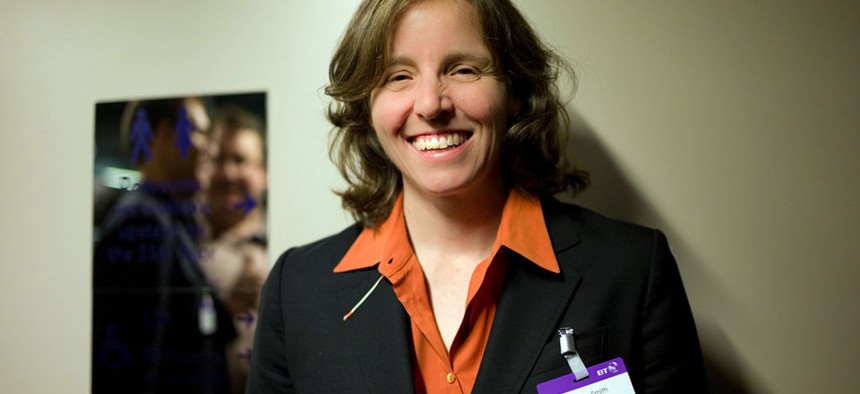Megan Smith Thinks Every Child Should Be Able to Code

Flickr user Joi Ito
The U.S. chief technology officer and former vice president of Google[x] believes the key to innovation is early STEM education.
Speaking at the Washington Ideas Forum Wednesday, U.S. Chief Technology Officer Megan Smith kept coming back to one idea: talent.
On the Department of Defense's role as a research-and-development powerhouse: “What I want to do is unlock talent.”
On the security of government servers: “We have a great team working on this.”
On the fumbled launch of Healthcare.gov: “What was great was tech folks showed up and helped it work. … How do we get more of that tech talent in the government?”
On whether slow regulation hinders innovation: “There are talented regulators running as fast as they can.”
Indeed, in a free-wheeling conversation with Ben Smith—Buzzfeed’s editor-in-chief and a former star Politico reporter—Megan Smith kept coming back to getting more folks in tech, period—and the very best ones in government. To that end, she said, American students should start learning to code in elementary school.
“Second graders learn to read, that’s a perfect time to make them code,” said Smith. She bemoaned the fact that many STEM classes had become less experiential and said that, if funding couldn’t be found for kids to get time in a lab, then perhaps “active learning” could make science and math more discovery-based.
“I was lucky that science fair was mandatory at my high school in inner-city Buffalo,” she said.
She also repeated a number of mantras common among government technologists. It’s not tech versus government but the two hand-in-hand. If technologists feel regulation is holding them back, then it’s not because government is by nature slow but because it’s so much easier to make new products faster now. She saluted the FAA’s “sandboxing” drone experiments in particular, finding sectors—from Hollywood to disaster relief—where drones can come in handy without affecting other businesses.
But again and again, it kept coming back to talent.
There are, she said, a million unfilled American IT jobs, and the key to filling them is small, code-training academies.
When the other Smith countered that presidents had been touting job training programs like these for two decades, Megan Smith said that some institutions—Hackbright Academy, for instance—had found jobs for their students with an 80 to 90 percent success rate.
In other words, to paraphrase a different set of Smiths, when it comes to job training programs, there's a hype that never goes out.



